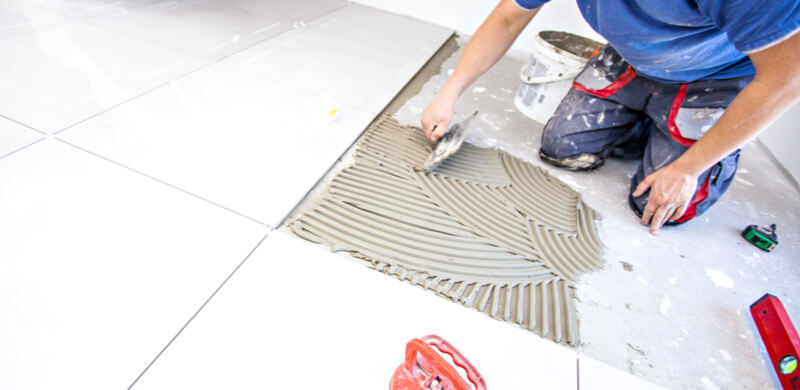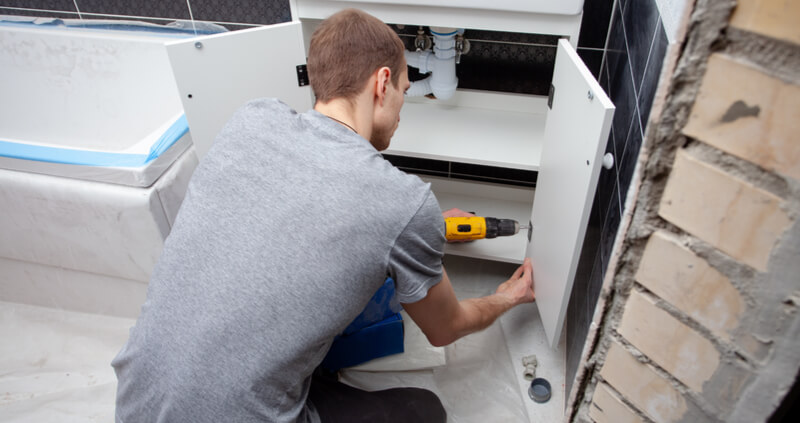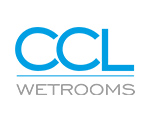
Building regulations have been updated in 2022 and will affect builders, self-builds, extensions, and renovations. UK building regulations are in place to ensure all wet rooms and bathrooms are designed to uphold health, safety, and comfort in the home and address issues such as performance and environmental impact.
Why Have Building Regulations Changed In 2022?
The new building regulations were announced in December 2021, with the goal of achieving superior standards for improvements in home energy efficiency. As part of the Levelling Up plan, the government has said that homes in the UK use 40% of the total energy use and this needs to be dramatically reduced.
All new homes, as of June 2022, now must produce less than 30% carbon dioxide, so no small task there, but is more likely to be achieved with the right information, advanced products, practices and a collective effort. This will help the UK towards meeting the net zero targets.
The 2022 UK Building Regulations Key Points to Note:
- If you had building regulations approval on your project before June 15, 2022, the old regulations will still apply.
- Be aware, you have until June 15, 2023, to commence the work, after this date the approval will lapse unfortunately.
- All project approval requests after June 15, 2022, must comply with the new regulations.
- Approved Regulation Documents ‘F’ and ‘L’ – have been updated.
- Approved Regulation Documents ‘O’ (and ’S’*) – have now been introduced
* Part S refers to Electric Vehicle Charging at home, and of course, does not relate to wet rooms or bathroom projects.
Firstly, although these regulations have been updated, some old regulations may apply to certain types of home projects. We will provide information on where they still apply at the end of this article. We have summarised the changes for you. You can also read our general guide on Wet Room Building Regulations, for more information in our Technical Help section.

Building Regulations – Changes for 2022 that will Affect Wetrooms and Bathrooms
Part F: Ventilation – Updated
Due to the presence of heat, water and steam, wet rooms need good ventilation. Part F of the Building Regulations Act 2010 requires that capable ventilation systems are installed to ensure appropriate airflow performance and energy efficiency.
This covers background ventilation and intermittent extractor fans. An electrical extractor fan vented outside is required when installing a wet room as part of a bathroom renovation. New Building Regulations, recommend continuous ventilation, rather than intermittent fans that are connected to the light switch, due to their improved energy efficiency and performance.
Part F minimum requirements are needed to ensure that the air quality provided in a wet room or bathroom (including shower room or ensuite) is adequate.
Minimum extract ventilation rates (litres per second)
- Intermittent extract systems – 15l/s
- Continuous extract systems – 8l/s
It is important to understand that air quality is a health and safety issue, and we take this very seriously for the occupants’ health and well-being in our installations.
Part L: Conservation of fuel and power – Updated
Wetrooms and bathrooms of course use energy to power the systems installed, from power showers (that can use large amounts of hot water) to radiators, extractor fans and lighting. Part L has been updated to require reduced energy consumption including low-carbon heating systems.
Part O: Overheating – New
Overheating is when a room is being heated too much, therefore, unnecessarily wasting valuable energy and creating higher running costs (especially with increasing energy bills). Part O has been introduced, to ensure installed systems are highly efficient in preventing overheating in a room.
Building Regulations – No Change for 2022
Wetroom Drainage Regulations
The installation and maintenance of wet room drains are covered in Part H of the Building Regulations Act 2010. It features a range of safety codes that should be followed by drainage providers. You will need to notify your local council’s Building Control Department if you make any changes to existing access chambers of drain runs during your installation of a wet room.
Wetroom Electrical Building Regulations
There are strict Electrical Guidelines for the installation of components, Part P of the Building Regulations Act 2010 covers this in detail.
Commercial Wetroom Design and Construction
No planning permission is specifically required for the installation of a wet room, however, designing a wet room for a new build project involves applying for building regulations approval.
Wetroom Renovation
Renovating a bathroom and converting it into a wet room? It is unlikely you’ll need to apply for building regulations approval. But, if you are making major structural changes, like an extension to accommodate a wet room or bathroom, or adding additional fittings such as drainage, you will need to talk to a building regulations officer prior to installation.
CCL Wetrooms Can Help
We hope this provides some guidance and awareness for the 2022 Building Regulations changes and how these can affect your wet room or bathroom installation or renovation.
Rest assured; your CCL Wetrooms installation will always be compliant with the latest building regulations.
For a considerate, compliant company, speak to our team today.









